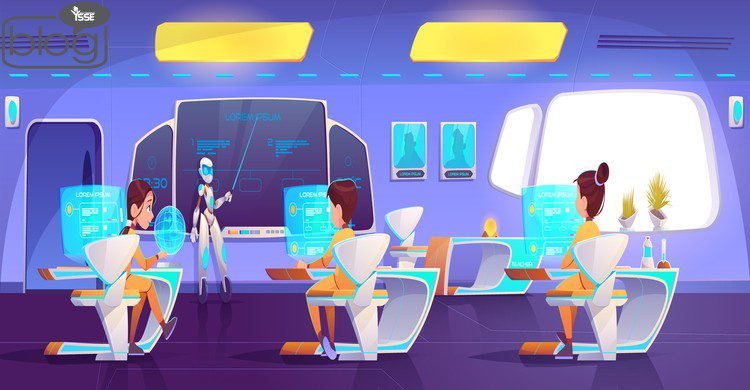The classroom of tomorrow generally refers to an advanced concept likely to be a more personalized and interactive learning environment that utilizes technology that engages students and makes learning more interesting. This concept envisions a departure from traditional classrooms toward more dynamic, interesting, interactive, and personalized educational experiences.
Personalized Learning: Students will learn at their own pace and their own way, with the help of technology and individualized instruction. Currently, we can see that students can select their courses from different online platforms and different platforms offer various types of useful courses on different paths.
Technological Integration: Future classrooms will be improved by a range of technological technologies. applications for virtual reality, augmented reality, and interactive displays, for instance. The learning-by-doing method can help you memorize information better thanks to these technological improvements. It also provides an immersive experience, visualization, and simulation that makes complex subjects simple.
Virtual reality and Augmented reality: These technologies will be used to bring learning to life, allowing students to experience things they would not otherwise be able to. The uses of VR and AR are very effective nowadays. So, it can play a vital role in tomorrow’s classroom.
Global Connectivity: With the rise of the internet, classrooms are no longer confined to the physical walls of a school. The classroom of tomorrow leverages online resources, video conferencing, and collaborative platforms to connect students and education across geographical boundaries, promoting cultural exchange and global awareness. During the period of pandemic, we all see the importance of global connectivity in the sector of education. Students will also learn about the responsibilities of global citizenship.
Assessment and Feedback: Traditional testing methods are evolving to include more comprehensive and authentic forms of assessment. Tomorrow’s classroom employs various tools, including online quizzes, project-based evaluations, peer assessments, and AI-powered feedback systems that provide timely insights into a student’s progress.
Teacher’s Role as Facilitator: In the classroom of tomorrow, teachers take on the role of facilitators rather than sole providers of knowledge. They guide students in exploring topics, cultivating curiosity, and developing critical thinking skills, while also integrating technology effectively into the learning process.
Additional Considerations: With furniture that is simple to shift around to accommodate various learning activities, the classroom will be more adaptable and flexible. Project-based learning, where students learn by doing, will be given increased importance. The use of technology in the classroom will increase to give students access to resources and information as well as to promote collaboration and communication. The teacher will play more of a facilitator role, assisting students in developing their critical thinking and problem-solving abilities while guiding their learning.
It’s important to note that the exact implementation of a classroom of tomorrow can vary based on factors such as resources, cultural norms, and technological infrastructure. There are also challenges to address, including privacy concerns, the digital divide, and the need for effective teacher training to navigate these new educational landscapes.
To read more blogs #click here.
Writer,
Zahin Rahman Zishan
Intern, Content Writing Department,
YSSE

